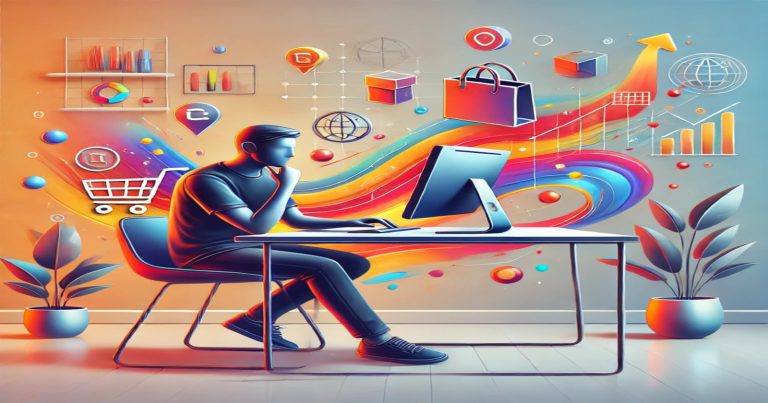E-business describes many models through which companies carry on business online over the internet as a means for buying, selling, and managing products, services, and information. Types of e business are B2B (Business-to-Business), B2C (Business-to-Consumer), C2C (Consumer-to-Consumer), and C2B (Consumer-to-Business). It has streamlined the way most companies operate: flexible, speedy, and easy to reach various customers across borders. This discussion will help answer the question What an e business is and its variety, advantages and disadvantages, therefore, to equip you with basic knowledge on digital businesses thriving worldwide.
What is E Business?
E business or electronic business refers to business conduct over the Internet. This includes purchasing and selling products or services, supply chain management, customer relationships, and even an organization’s human resource and finance functions. The difference between E Business and e-commerce is that e-commerce only deals with transactions over the Internet, whereas E Business covers more activities associated with the electronic handling of business functions.
E Businesses Examples include Amazon, an online marketplace selling products globally; Netflix, which provides digital streaming services; Zomato and Swiggy, online food delivery platforms connecting restaurants to customers; and Tata Cliq, an Indian e-commerce firm offering fashionable and lifestyle e-products.
Components of E Business
E-business tools help companies manage operations, improve efficiency, and enhance their customers experience. The most important tools include e commerce platforms, CRM systems, SCM solutions, and ERP software for a particular business function.
- E-commerce: Selling or buying something online. It facilitates any business to reach a global audience and operate 24/7.
- Online Customer Relationship Management: It will manage all the online customer interactions. Thus, it will track customers’ behavior and thereby improve the quality of services.
- Supply Chain Management: All inventory, suppliers, and logistics are online. SCM ensures that all goods and information flow is efficient.
- Enterprise Resource Planning (ERP): Integrating all business processes for efficiency. Streamlines operations by consolidating data within departments.
Types of E Business
E business can be categorized into several classes depending on the parties involved. The significant kinds of e business are B2B (Business-to-Business), B2C (Business-to-Consumer), C2C (Consumer-to-Consumer), and C2B (Consumer-to-Business). Every model has distinctive characteristics, benefits, and challenges.
Business-to-Business (B2B)
In a B2B business, there is a transaction between two companies, such as a wholesaler selling goods to a retailer. The model will be a business operation where businesses trade in goods or services with one another. Alibaba and IndiaMART are classic examples of the B2B marketplace, bridging businesses worldwide.
There are various advantages of B2B transactions. It deals with a huge number of orders, which leads to economies of scale for businesses. Companies generally enter into long-term partnerships, which means stable revenue and constant business growth. This model suits businesses that aim for reliability and long-term collaboration.
- Advantages of B2B E Business: With benefits such as large-scale orders bringing in greater revenue, secure relations because of long-term client contracts ensuring a regular income, and efficient supply chains that improve processes and lower costs, B2B e-business benefits.
- Disadvantages of B2B E Business: B2B e-business has a sophisticated sales process that involves long-term negotiations and contracts, a smaller customer base focuses on only one target market, and has more competition with other large businesses.
Business-to-Consumer (B2C)
B2C, or Business-to-Consumer, is the type of business selling goods or services directly to customers on the web. The approach is majorly based on fulfilling the requirements of consumers, and companies primarily use it to target a large crowd. Some popular examples of B2C are Amazon and Flipkart.
B2C has several advantages. It helps businesses reach a global market, thus expanding their market. Direct customer interaction gives the business good feedback to improve its products and services. Also, B2C platforms enable companies to offer a wide range of goods to meet the customer’s demands.
- Advantages of B2C E Business: By reaching millions of customers across the globe, easy shopping with products and services being available 24/7 at one’s convenient time, thereby reducing costs for not requiring bricks and mortar facilities and saving overheads.
- Disadvantages of B2C E Business: High competition requires strong marketing; successful customer retention is difficult due to the lack of possibilities to build long-term loyalty; and logistics can get very complex with deliveries and returns.
Consumer-to-Consumer (C2C)
C2C stands for Consumer-to-Consumer; it is the direct buying and selling of a product or service from each other by online platforms. This model connects sellers and buyers without involving a traditional business. Examples include most popularly eBay and OLX.
C2C offers several advantages. It does not require much business infrastructure and is thus available to many to participate. Such platforms provide an extensive variety of products to suit the different needs of customers. Moreover, C2C enables easy and direct transactions that make buying and selling easier for the users.
- Advantage of C2C E Business: C2C e business is inexpensive in terms of set-up expense because the platforms carry out transactions, easy access for individuals to offer their products or services, and available variety of products–original, used items at competitive prices.
- Disadvantages of C2C E Business: There is a lack of trust since fraud or low-quality products may be present, and the payment issues are also relatively more compared to B2C, and less customer support can be offered.
Consumer-to-Business (C2B)
C2B, or Consumer-to-Business, is a model where consumers sell products or services to businesses. This includes freelance work, user-generated content, or other contributions consumers offer. Popular interfaces like Upwork and Fiverr make it easy for consumers to connect with businesses that seek their services.
C2B has its advantages in that it provides people with flexible working methods whereby people can, therefore, work on their terms. Businesses will also benefit from having access to on-demand services and cost-efficient, asset-light, and made-to-order services from independent experts. This model forms a win-win relationship between consumers and businesses.
- Advantages of C2B E Business: Freelancing provides flexibility to work with various businesses, global reach to clients worldwide, and cost-effective hiring for companies with no long-term commitments.
- Disadvantages of C2B E Business: Freelancers experience unstable incomes and intense competition in their project hunt while facing no employment security without having fixed contracts and employee benefits.
Types of E Business FAQs
What are the types of E Business?
There are four basic types of E Business, B2B, B2C, C2C, and C2B.
What are the advantages of E Business?
E Business helps in global access, cost-saving, 24/7 hours, and huge audience reach.
What are the types of E Business models?
Common E Business models include B2B, B2C, C2C, and C2B, each targeted at various transactions and people.
What is the difference between E Business and e-commerce?
E-commerce focuses on transactions through the web, while E Business embraces every other business activity on the internet like supply chain management, marketing, and more.
What are the Categories of types of e-commerce business models?
E Business models of the e-commerce business are similar to it. B2B, B2C, C2C, and C2B are online buying and selling activities.


